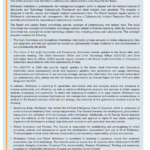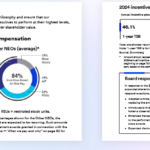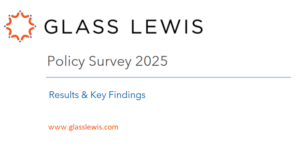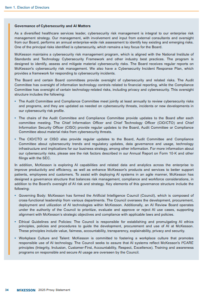As part of our blog series based on this great panel of in-house practitioners – featuring Leidos’ Henrique Canarim, Etsy’s Jennifer Card and Intel’s Alex Shukhman – here’s a blog that addresses the question of: “When you are in charge of a disclosure team, what is your process to ensure people deliver timely and competently?”
- Etsy’s Jennifer Card – I prefer to set clear timing and responsibilities at the outset of any drafting process. It’s critical to start early, so I like to use checklists that have clearly defined ownership and deadlines. We also rely on preparer and reviewer signoff charts.
It’s often important to have one person preparing disclosure and then have another set of eyes to take a read-through. Calendars can be very useful in contextualizing deadlines as they can help show not only when people need to deliver their own sections but also get some buy-in into how people’s individual sections that they’re reviewing fit in with the bigger picture of the various reviews and approvals that are necessary before disclosures actually get filed with the SEC.
Staying in sync is so important, too. Not only with your legal team that might be working with you but also with your broader stakeholder group. Working group meetings might be important to help set the cadence, which might vary for your company. It could be a weekly meeting amongst the disclosure group to provide status updates, talk through questions or convey reminders on deadlines. - Leidos’ Henrique Canarim – Disclosure is a team sport. You really need to get your partners to be hand-in-hand. The folks from HR, investor relations, corporate governance, the legal team and marketing if you’re getting them looped in. Make sure that everyone’s on the same page.
Understand that this is an enterprise work product. It’s not just the legal department or just finance or IR that is in charge of this. Everyone looks good if the work product looks good. Starting early is key.
To the extent that you’re including new disclosures, get management buy-in as early as possible. You don’t want to surprise your most senior executives or your board with a total redesign or a total refresh that they only see at the very last minute. You might get some allergic reaction to that.
So make sure when you’re doing the project timeline that Jennifer talked about, that you’re really building in the time to sit down with your executives – or your disclosure committee – to really show them and explain to them what you’re doing before they sign off on this. That they’re really having this culture of accountability with each other.
We do weekly check-ins on the proxy for example to see how everyone’s doing. We ask if anyone needs help. We ask if they have the proper resources to deliver on their part or do we need to shift things around. We do that in a dynamic way and communication is key. We really need to be synced up. - Intel’s Alex Shukhman – I would say we do a lot of the same things that Jennifer and Henrique have mentioned. The only other things that come to mind that I think are useful is spending time and taking effort to really engage with the individual functions that are involved. That can be very helpful to provide them with more context around what’s the environment that you’re going to be working in, what the dynamics are, what are some of the challenges that you foresee.
And also trying to understand what they’re doing too because sometimes this is not a one-sided situation. It won’t be that we just put together a plan and we force it on everybody. Getting that individualized context and engagement can be helpful to build rapport. It’ll give you a much more informed and better plan of action for everybody. Then the other parties are better positioned to help develop stronger disclosure for you when they have all that broader context.
We’ll do a kickoff meeting which I’m sure most public companies do and I find that’s a really great tool to get everybody started on the same foot and provide a little bit more of a broader context in a wider setting.
Sometimes it’s great that you will have all kinds of parties talking in a group setting because that may bring out certain things that might otherwise not have been pointed out. Someone in the meeting hears something that connects a dot and then that feedback causes you to reshuffle what you what you had in mind in terms of your plan or how you’re going to put together the disclosure.





















